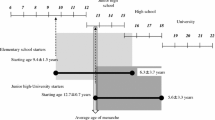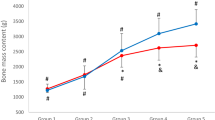Abstract.
Bone mineral density (BMD) was measured in the upper part of the skull, the femoral neck, and the total body by dual energy X-ray absorptiometry in 56 male and 33 female active athletes, 18–40 years of age, together with 64 male ex-weight lifters, 35–79 years of age. The active athletes were compared with 41 male and 54 female controls, the ex-weight lifters with 133 male controls. The purpose of the study was to see if BMD in the upper part of the skull, a region virtually unaffected by physical load, is different in athletes and controls. The male athletes had a 3% higher BMD for the total body and 12% for the hip, whereas the BMD for the upper part of the skull was 10% lower than controls. Corresponding BMD values for the female athletes were 4% higher for total body and 10% for the femoral neck, and the upper part of the skull was 7% lower than in controls. After 65 years of age there was no difference in BMD comparing ex-weightlifters and controls. Using a constructed ratio BMD total body to BMD upper part of the skull, the ex-weight lifters had 10% higher values also after age 65. It appears that bone mass is higher in weight-loaded areas and lower in an unloaded region, such as the upper part of the skull, in exercising athletes. After cessation of the active career, the bone mass approaches that of the controls and after 65 years of age, no difference was found comparing ex-weight lifters and controls. Due to the apparent bone mass shift from unloaded skeletal regions to loaded skeletal regions that seems to take place in active athletes, the constructed ratio, BMD total body to BMD upper part of the skull, seems to discriminate the influence on the skeleton in a more sensitive way than measuring the BMD in defined skeletal regions on their own. By using this constructed ratio, the influence on bone mass of physical exercise early in life is also detectable at older ages.
Similar content being viewed by others
Author information
Authors and Affiliations
Additional information
Received: 6 June 1995 / Accepted: 1 April 1996
Rights and permissions
About this article
Cite this article
Karlsson, M., Hasserius, R. & Obrant, K. Bone Mineral Density in Athletes During and After Career: A Comparison Between Loaded and Unloaded Skeletal Regions. Calcif Tissue Int 59, 245–248 (1996). https://doi.org/10.1007/s002239900117
Issue Date:
DOI: https://doi.org/10.1007/s002239900117




